Life can change in an instant and at Republic, keeping our employees, customers and communities safe is our number one priority. We never know when or if we will find ourselves in a situation where another life is dependent on our ability to provide CPR or other lifesaving care. We recently caught up All Source Intelligence Analyst Heather T. to learn more about the CPR classes she teaches to employees who volunteer to become part of Republic’s First Responder Teams.
What is your role at Republic? I started with Republic Services in November 2016 as an Administrative Assistant in our Security Department and am currently an All Source Intelligence Analyst within the same department. I also serve as a CPR Instructor for Republic’s First Responder Teams. In 2018, I signed on with the American Red Cross to become an instructor and held my first class in 2019.
Who do you train in CPR? We have First Responder Teams at our Corporate Office, Northsight and Customer Resource Centers. Our employee volunteers are trained to assist if there is an incident at these locations. To date, over 140 employees have been trained at these locations. As part of the First Responder Team, employees complete in-person and online training sessions and quarterly refreshers. The Area Safety Managers in the field are also trained in CPR and teach at an area level. Employees trained in CPR can help save lives in the workplace and help the whole community in the long run.
What does the training include? The classroom portion is approximately 6-7 hours. We cover assessing the situation and how to provide assistance based on certain details. The course also involves video segments, situational role playing and hands-on CPR and automated external defibrillator (AED) learning activities. In addition to CPR, the course also touches on basic first aid like identifying potential signs of stroke, seizures, choking, frost bite, hypothermia and a few other topics.
Covid has shifted in-person teaching to a blended learning format. Participants complete an online portion, and then we meet so they can demonstrate the skills learned online.
What is the biggest challenge when it comes to learning CPR? Some individuals feel it’s too big of a responsibility to administer lifesaving care, and others feel even though they are trained, they may freeze or forget how to perform should an emergency arise. The truth is we never know what our reaction will be should we be faced with an emergency. I am a firm believer of repetition builds muscle memory. The more you practice, the more it becomes second nature should an emergency arise.
Why is this role important to you? We never know when or where an emergency situation will present itself. The more individuals we have trained to identify an emergency or medical situation, the faster we can react and assist. Even if one person uses the skill sets taught, then I have done my job. I lost a dear friend in his early 30s due to a massive heart attack. He lost too much oxygen to his brain prior to the paramedics arriving. It inspired me to teach, and I share my story at the beginning of every class.
Have you ever used your training in an emergency situation? Yes, on a few occasions. Even though we train, performing CPR to save someone’s life is a scary and intense situation. I tell all class participants should you ever have to save a life, please make sure you take time for yourself afterward. It is a rush of emotions and adrenaline!
How do employees sign up for a class and is it free? The course I currently teach is for the First Responder Teams at Corporate employees only. Individuals who wish to be certified can contact their local American Red Cross for training locations. Fee varies by location and course type.
A big thank you to our first responder team members - past and present!

Vic R. Renders Lifesaving CPR
Vic R. is a Digital Operations Manager and part of the First Responder Team. Earlier this year, his lifesaving skills and bravery saved a life. While walking his dog, he saw a man fall and get back up a couple of times. The last time he fell, he didn’t get back up. That’s when Vic knew he needed to act quickly.
When he got to the man, he was unresponsive. He checked for a pulse and heard a couple of gasps. Vic immediately called 911 and began administering CPR for about 9 minutes until the ambulance arrived. An update from the police non-emergency line confirmed that the man was alive and in critical condition following the incident. We are so thankful for Vic’s bravery and lifesaving skills.
